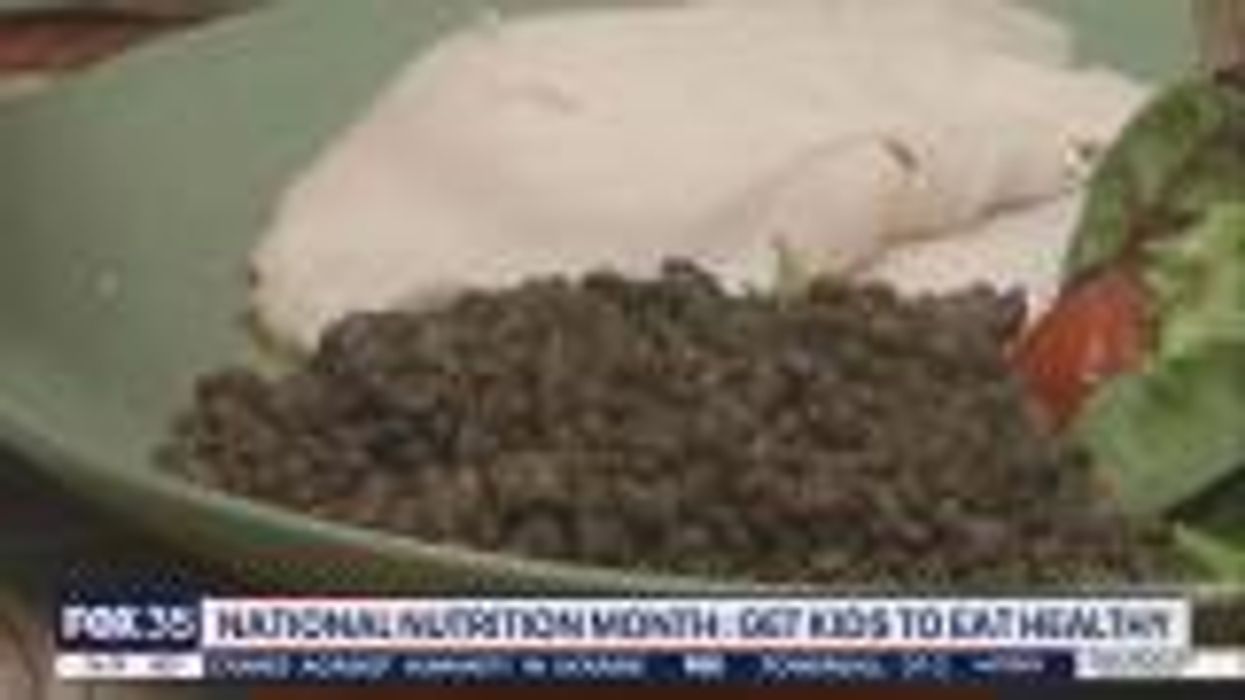Indy100 Staff
Aug 24, 2022
National nutrition month; get kids to eat healthy
Fox
Beetles could soon be helping to feed the world, according to new research.
The insects' larvae - known as mealworms - have been turned into meat by scientists.
Mixed with sugar, they taste just like the real thing, according to South Korean boffins.
It may soon be used in convenience foods such as sausage rolls or chicken nuggets - as a tasty source of extra protein.
The global population is expected to reach 9.7 billion by 2050 - and nearly 11 billion at the end of the century.
Meat is basically protein, fat and water. Alternatives are desperately needed.
Climate change will have significant implications for diet and nutrition and there is growing demand for resource-intensive animal-based products.
Project leader Dr Hee Cho, of Wonkwang University, said: "Recently, eating insects has become of interest because of the increasing cost of animal protein, as well as the associated environmental issues."
Feeding people with cows, pigs and sheep will require larger amounts of food, water and land. Creepy crawlies are edible, good for you - and much more sustainable.
Dr Ho said: "Insects are a nutritious and healthy food source with high amounts of fatty acids, vitamins, minerals, fibre and high-quality protein - which is like that of meat."
Sign up for our free Indy100 weekly newsletter
But mealworms suffer from an image problem. In many countries, eating insects isn't common - with squeamish about munching on them, she said.
Some manufacturers are trying to change opinion by selling cooked whole mealworms as crunchy, salty snacks. But acceptance is not widespread.
Dr Cho is promoting a sneakier approach - grinding the little critters into flavoursome seasonings inside easy-to-cook products.
She said: "Mealworm contains beneficial essential amino acids and is high in unsaturated fatty acids."
The oils boost health in a number of ways - including reducing cholesterol, easing inflammation and improving heart rhythms.
Dr Cho said: "Mealworm is one of the most widely used edible insects in the world. However, edible insects are not universally accepted in our food cultures due to their repellant appearance and unique flavour characteristics."
The team first compared mealworm aromas throughout the life cycle, from egg to larva to pupa to adult - identifying differences in the individual compounds.
But all of the stages mainly contained volatile hydrocarbons which evaporate and give off scents.
For example, fragrances of raw larvae were likened to a combination of wet soil, shrimp and sweet corn.
The scents developed during various cooking methods. Steamed mealworms had a stronger scent of sweet corn. Roasted and deep-fried versions had shrimp and oil-like attributes.
Analysis showed chemicals formed that were similar to those in cooked meat and seafood are cooked. They included pyrazines, alcohols and aldehydes.
The findings suggest additional reactions when heated with sugar. The 'process flavours' are produced through caramelisation and fatty acid oxidation.
The result is usually a suite of "meat like" and savory flavours, explained Dr Cho.
In a series of experiments, different manufacturing conditions and ratios of powdered mealworm and sugars produced many varieties caused by 98 volatile compounds.
Samples were tested on a panel of volunteers to provide feedback about which had the best 'meat-like' odour.
Co author Hyeyoung Park, a graduate student, said: "As a result of this study, ten of the reaction flavours were optimised based on consumer preferences."
It is the first time beetle larvae have been used to make fake meats. The researchers hope their results will lead to them being developed for mass production.
Meat-like and savoury flavourings and seasonings will encourage the convenience food industry to include edible insects in their products, said Dr Cho.
The next step is to further improve cooking to reduce any potentially undesirable or off-putting flavours in the final material made from beetle larvae
Ms Park presented the findings at a meeting of an American Chemical Society in Chicago.
by Mark Waghorn SWNS
Have your say in our news democracy. Click the upvote icon at the top of the page to help raise this article through the indy100 rankings.
Top 100
The Conversation (0)














